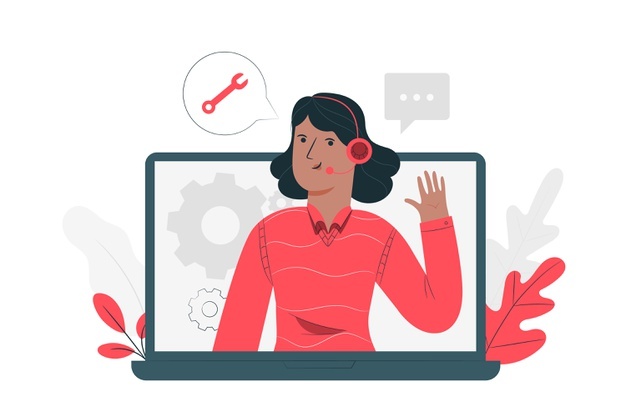How can we conceive the future of customer service ?

How can we conceive the future of customer service ?
 In 2021, customer service is often at the heart of business life and the reflection of their health. Almost permanent technological innovations force brands and companies to adapt constantly.
In 2021, customer service is often at the heart of business life and the reflection of their health. Almost permanent technological innovations force brands and companies to adapt constantly.
The virality of social networks amplifies the results of your Customer Relations strategy, accelerates the decline of some and the success of others. The new technologies dedicated to Customer Service are no longer reserved for major brands, but are democratizing, and are now accessible to e-merchants, TPE, SMEs, ISEs
You want to get ahead of your competitors, so check out the trends in Customer Relationship Tools here.
Artificial Intelligence and Task Automation
In a traditional contact centre, Level 1 agents are assigned to simple, repetitive and time-consuming tasks such as:
- Processing of e-mails and contact forms,
- Processing of incoming calls
Referral or FAQ conversational robots are able to handle these tasks. Above all, Artificial Intelligence (AI) helps in the learning and continuous improvement of Chatbots. This has a significant impact on the results of your contact center. Your agents can focus on higher value-added interactions and this helps improve customer satisfaction.
Agents happier in their work
This time saving will allow the agent to be less stressed and to become more involved in his daily tasks . The AI thus allows advisors to see their job card enriched, which facilitates their loyalty to the company.
The chatbots
Conversational marketing is the topic of the moment, but conversations take time, cost money and their growing volume saturates customer relationship centres. A chatbot can be defined as “a programmed response or artificial intelligence to answer a user’s questions without using a human operator”. Consider them as your company’s virtual assistants or conversational robots, ready to help H24 7/7 customers.
Conversational chatbots of the customer service can deal with many questions like informing the user about the status of his order and answering. Chatbots are available H24 7/7 without ever saturating. And thanks to machine learning, your conversational robot improves over time. Chatbots can also interact with third parties such as CRM to exchange data. This content can be continuously updated. This is in particular what makes it possible to make the connection between Target First and CRM Sellsy propose products or services after an intelligent conversation with the user. They can even connect consumers with human advisors. This avoids the client having to fill out an online form, explain their situation a second time and wait a long time for a response. Above all, chatbots are available 24/7 and never saturate. And thanks to machine learning, your chatbot improves over time. Chatbots can also interact with third parties like CRMs to exchange data. This content can be continuously updated. In particular, this is what makes the connector between Target First and Sellsy CRM.
Multi-channel communication is real time or delayed
Artificial intelligence can do a lot, but not to the point of doing without human advisers, quite the contrary. In 2021, Internet users want to be able to dialogue with companies, by any means and at any time. Some prefer the telephone, others the cat. Some want to be taken over right away, others on hold. But all ask to be considered, heard and supported. In this context, websites must offer all communication channels and have a unique software solution capable of consolidating conversation histories, regardless of the channels used:
- The chat
- Click-to-call also known as Web Call Back or Instant Reminder
- The chatbot
- The messaging
- Facebook Messenger
- Appointment Booking Forms
Social networks
In today’s mobile economy, consumers are more connected than ever. They’re not waiting to go home to write a bad review. Instead, they immediately post on social networks or complain directly via messaging apps. Some even document their negative experiences via live videos on platforms such as Facebook and Snapchat. Social media is a double-edged sword in customer service, allowing brands to quickly connect with their customers, while potentially making bad experiences public.
Going forward, the threshold for complaints will continue to decline as social media capabilities evolve. For example, ten years ago, brands would not have even considered handling complaints via Instagram. Today, ignoring these channels poses a huge risk to e-reputation and customer satisfaction. Greater connectivity means more points of contact with customers, which will result in increased inquiries and increased workload for customer service teams. How brands approach these channels will be critical to the success of their service business in the years to come.
Customization of services
According to one study, “consumers expect highly personalized shopping experiences from retailers and are willing to spend more money when brands offer targeted recommendations.” The same study found that 71% of consumers are frustrated with impersonal experiences. It is therefore clear that personalized customer service increases profits. With such an issue, it’s time to take personalization of the customer experience seriously.
Store employees need to know what you bought online, and vice versa. Recommendations must be specific, specific and personalized.
Are you ready to write the future of customer service ?
The human and technological organization of customer service is undergoing a transformation. Successful companies test new ideas and have made their customer relationship strategy one of the pillars of their overall strategy. Retaining a customer costs ten times less than winning a new customer, so don’t miss the right tools to do so.
If you want to start a conversation more easily with your customers, don’t hesitate to check out our Target First services or enjoy a free trial.







